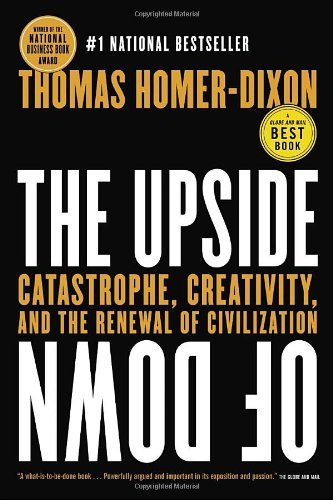2011 Trends in Philanthropy and the Charity Sector
- #SoCent
- Alberta
- Canada
- charity
- charity sector
- CSA
- expert
- financial management
- Loblaws
- NextGen
- North America
- philanthropy
- research
- Thomas Homer-Dixon
- trends
- trends in philanthropy
- Upside of Down
The past few weeks have seen several different reports on Trends in Philanthropy for 2011. A few months ago I shared my thoughts on what the next couple of years will hold - here are the two most recent blog posts on this topic:
Opportunity in the Void - Societal Paradigm Shift
5 Global Forces that will Change Charitable Sector
 I just picked up Thomas Homer-Dixon's The Upside of Down for the second time. I read it when he first published this book a few years ago. It's interesting to see how some of his observations (economic collapse being the most obvious) have come to pass. There is one in particular trend that Mr. Homer-Dixon outlines in his book as a key influencer on societal construction --> collapse --> categenisis that I think will be on the forefront of our lives over the coming year as it pertains to charity and philanthropy, the "power" of the environment - our natural surroundings.
I just picked up Thomas Homer-Dixon's The Upside of Down for the second time. I read it when he first published this book a few years ago. It's interesting to see how some of his observations (economic collapse being the most obvious) have come to pass. There is one in particular trend that Mr. Homer-Dixon outlines in his book as a key influencer on societal construction --> collapse --> categenisis that I think will be on the forefront of our lives over the coming year as it pertains to charity and philanthropy, the "power" of the environment - our natural surroundings.
In the recent past, a number of environmental calamities shaped our charitable investments (tsunamis, floods, earthquakes...). In addition, our relationship to the environment is morphing. There was direct impact on the tourism industry in Alberta resulting from an anti-Alberta ad campaign because of the oil-sands projects. The buy local movements and community supported agriculture organizations are bringing people together in smaller, tighter, community networks. So much so, that even big-box retailers like Loblaws are trying to show the "face of their farmers" on their organic and "free" products.
So what does this mean?
A few of things:
- More donors will be looking at making commitments to environmental organizations that are addressing long-term sustainable solutions to problems
- Government policies around environment, consumerism and social investing will be strengthened to support the social enterprise movement (#socent)
- Organizations will have to report stronger proof-of-impact models on environmental issues and the solutions
- More dollars, private philanthropy, corporate citizenship and government grants will be directed at environmental organizations (both for-profit and non-profit)



Comments
Post new comment